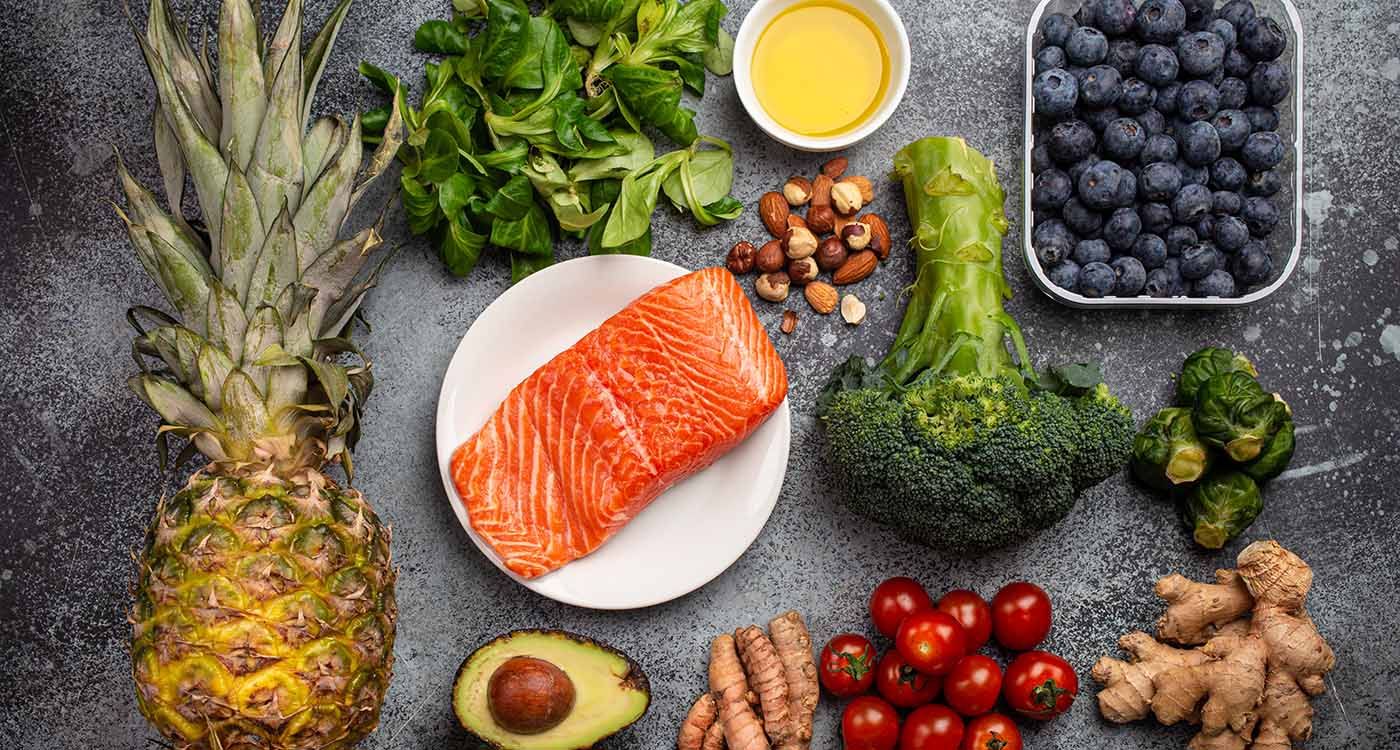
Often silent, chronic inflammation is at the root of many modern diseases. In the face of this invisible threat, food proves to be a major weapon—capable of calming the inner fire far more sustainably than a simple painkiller.
Inflammation is, in itself, a natural defense mechanism. When a foreign body, infection, or injury occurs, the body mobilizes immune cells to repair tissue. Redness, swelling, heat—these are signs that the body is healing. But there is another, more insidious and damaging form: chronic inflammation. Invisible to the eye and symptom-free for a long time, it slowly but surely infiltrates body tissues, fueled by stress, lack of sleep, sedentary habits—and above all, an unbalanced diet.
Today, research is clear: chronic inflammation plays a key role in many so-called lifestyle diseases, such as cardiovascular disorders, type 2 diabetes, osteoarthritis, autoimmune diseases, and even depression (Harvard Health Publishing, 2021). Rather than merely treating symptoms with anti-inflammatories, more and more doctors and nutritionists are calling for action at the root—starting with what's on our plate.
Pioneering work by doctors like David Servan-Schreiber (in his book Anticancer) and Andrew Weil, a leader in integrative medicine, has helped popularize the concept of an anti-inflammatory diet. This approach doesn’t mean following a rigid list of restrictions, but rather restoring a lost balance. It involves favoring foods that calm the body and cutting back on those that ignite inflammation.
Top offenders include refined sugar, white flours, industrial vegetable oils high in omega-6 (sunflower, corn), processed meats, alcohol, and ultra-processed foods. These disrupt the gut microbiome, cause blood sugar spikes, trigger the release of pro-inflammatory cytokines, and burden the liver and pancreas.
On the other hand, there are many powerful allies: colorful vegetables, berries, fatty fish rich in omega-3s (salmon, sardines, mackerel), extra virgin olive oil, nuts, turmeric, ginger, green tea… Studies show, for instance, that turmeric—thanks to its active compound curcumin—has effects comparable to certain non-steroidal anti-inflammatory drugs (NSAIDs), but without side effects (Chainani-Wu, 2003, Alternative Medicine Review). Omega-3s, meanwhile, help regulate the immune response and are linked to reduced risk of chronic inflammatory diseases (Calder, 2006, Proceedings of the Nutrition Society).
Nutrition, however, is more than just a list of ingredients. It’s also about rhythm, quality, and overall coherence. The same food can soothe or harm, depending on how it’s consumed. Bread, for instance, can be highly inflammatory if it’s white, refined, and industrial—but it becomes beneficial if it’s whole-grain, sourdough, rich in fiber, and eaten in moderation. Likewise, red meat isn’t inherently toxic, but excessive consumption—especially in processed forms—is linked to higher risks of chronic disease.
At the heart of this approach lies gut microbiome health. Recent studies, such as those by Dr. Patrice Cani’s team in Belgium, show the microbiome’s major role in systemic inflammation. An imbalanced microbiome releases endotoxins (LPS) from intestinal bacteria into the bloodstream, triggering low-grade inflammation throughout the body. That’s why dietary fiber, fermented foods (kefir, sauerkraut, plain yogurt, miso), and polyphenols are key to feeding bacterial diversity and strengthening the gut barrier.
This holistic view of nutrition is also tied to a rediscovery of eating as a form of self-care. Eating to heal also means slowing down, chewing properly, cooking, and choosing thoroughly. Simply preparing your meals, following a regular schedule, and eating calmly activates the parasympathetic nervous system—the one responsible for digestion and relaxation.
Pain treatment clinics are starting to include nutrition as a core therapeutic tool. At Saint-Antoine Hospital in Paris, the chronic pain unit offers personalized nutritional counseling. In the US, the Cleveland Clinic and the University of Arizona’s Center for Functional Medicine have made it a cornerstone of their prevention strategies.
This is not about claiming that food can cure everything. But in an era overwhelmed by stress, pollutants, and medications, food offers an accessible, side-effect-free path—deeply rooted in daily life. It gives us power. In fact, before it was consumption, eating meant care.
In the fight against inflammation, our first line of defense is not in the medicine cabinet—it’s in the kitchen. A well-thought-out plate is sometimes worth more than a well-measured pill.
Adopt These Anti-Inflammatory Foods
-
Fresh fruits and vegetables, especially berries, spinach, broccoli, beets
-
Fatty fish (salmon, sardines, mackerel), high in omega-3s
-
Quality oils: extra virgin olive oil, canola oil
-
Nuts and seeds: walnuts, almonds, flax, chia
-
Anti-inflammatory spices: turmeric (with black pepper), ginger, cinnamon
-
Fermented foods: kefir, plain yogurt, sauerkraut, miso
-
Legumes and whole grains (quinoa, buckwheat, oats)
-
Green tea and herbal infusions
-
Dark chocolate (over 70% cacao, in moderation)
Avoid These Pro-Inflammatory Foods
-
Refined sugar and industrial pastries
-
White flours, white bread, white pasta
-
Ultra-processed foods (ready meals, packaged snacks, store-bought sauces)
-
Vegetable oils high in omega-6: sunflower, corn, soy (when consumed in excess)
-
Processed meats (sausages, bacon, nuggets)
-
Excessive amounts of red meat
-
Alcohol (especially sugary and strong liquors)
-
Sugary drinks, sodas, industrial fruit juices
-
Trans fats (industrial margarine, repeated frying)


Comments